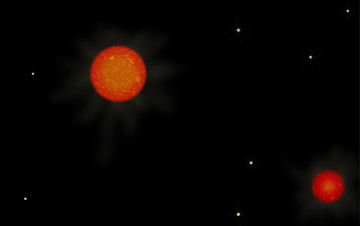Howdy, Neighbors: Long-term study finds a batch of red dwarfs
The galactic neighborhood just got more crowded. Astronomers have found 20 previously unknown star systems that lie within 33 light-years of Earth. All the stars are faint, low-mass objects called red dwarfs, which rank among the most prevalent stars in the Milky Way.

The team discovered the star systems—2 triplets, 3 pairs, and 15 single stars—using a telescope at the Cerro Tololo Inter-American Observatory near La Serena, Chile. Since 1999, the astronomers have been monitoring hundreds of stars, looking for motions indicating that some might lie close to the solar system.
Todd Henry of Georgia State University in Atlanta and his colleagues describe their findings in the December Astronomical Journal.
The newfound neighbors offer fresh data on the frequency with which stars have partners, notes Henry. The growing census of nearby stars also provides new places to search for extrasolar planets.
“Red dwarf stars … are the closest and most numerous stars to us, so they are the best places to look for planets,” comments theorist Alan Boss of the Carnegie Institution of Washington (D.C.).
Nearby stars reveal their distances from Earth by tracing tiny ellipses in the sky—a consequence of Earth’s orbit around the sun. The greater the apparent motion, the nearer the star. Henry’s team has concentrated on red dwarfs, which range in size from about a tenth to half the mass of the sun. The dwarfs are among the dimmest stars and so have taken a long time to find.
Although astronomers have found several extrasolar planets orbiting red dwarfs, theorists had dismissed the possibility that any such planet could harbor life. Calculations indicated that a body warm enough to hold liquid water would have to lie so close to a red dwarf that the planet would be forced to rotate in sync with the star. One side would always face the star, and the other would face away, creating climates that would be either boiling hot or freezing cold.
But models described by Boss and his colleagues in an upcoming Astrobiology paint a more optimistic picture. For instance, if such a planet were to have a thick atmosphere, it could redistribute heat from the star and possibly make both sides of the planet habitable.
In recent years, Henry’s team has also found several near-Earth white dwarfs, which are old, sunlike stars, and failed stars called brown dwarfs. Henry told Science News that his team plans to report eight nearby star systems not mentioned in the current paper.







